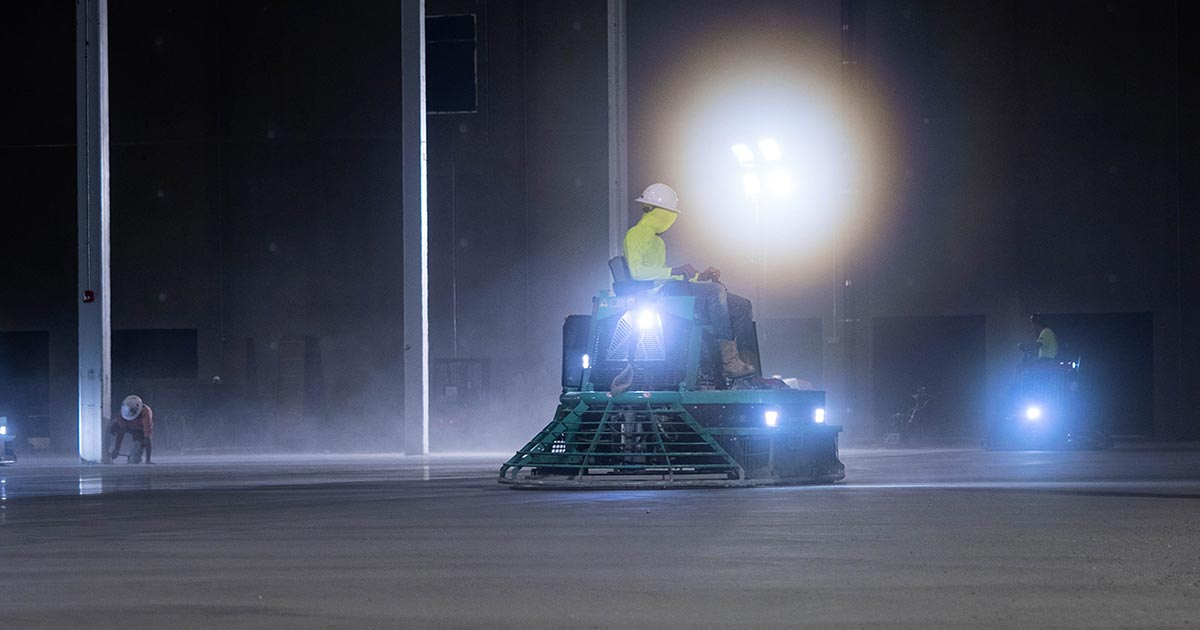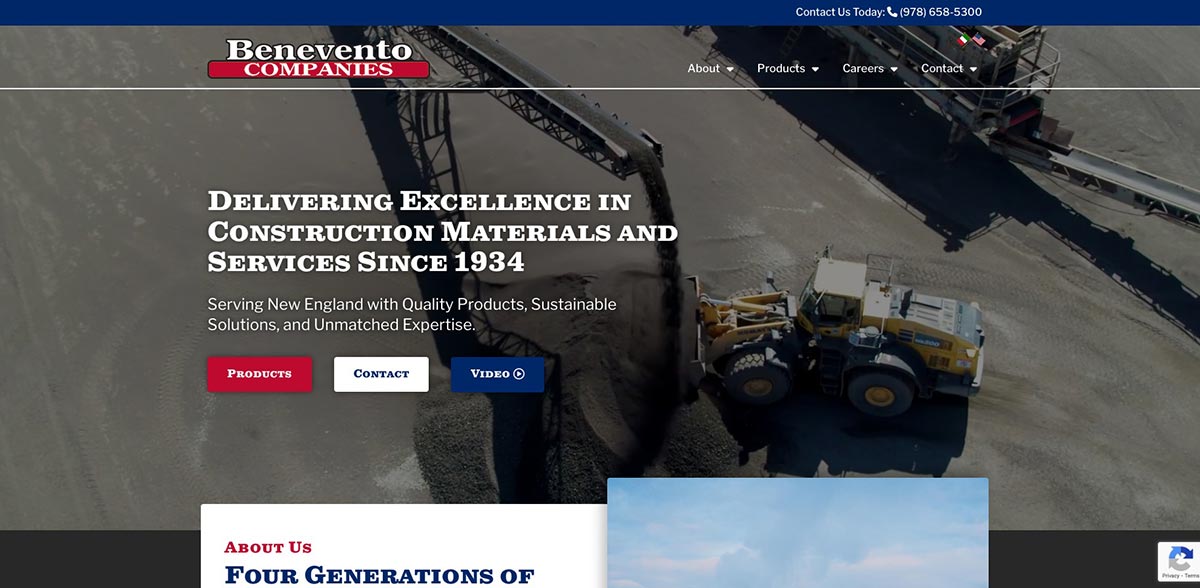




Construction Web Page Design: Key Elements for a Strong Online Presence
In the construction industry, having a strong online presence is crucial for building credibility, attracting clients and employees, and showcasing your services. A well-designed construction web page not only establishes your company’s professionalism but also serves as an essential marketing tool that drives leads and conversions. But what goes into effective construction web page design? In this post, we’ll explore the key elements that make for an engaging and functional website, tailored to the needs of construction companies.
Why Construction Web Page Design is Important
The construction industry is highly competitive, and your website is often the first impression potential clients have of your business. A well-designed website not only establishes credibility but also helps you stand out from competitors. Here’s why construction companies need a high-quality website:
- Showcase Expertise: Your website is the perfect place to highlight past projects, client testimonials, and the services you offer.
- Drive Conversions: A well-optimized website with clear calls-to-action (CTAs) can help convert visitors into leads, clients, or potential new employees.
- Improve Local SEO: A properly designed website will improve your visibility in search engine results, helping local clients find you more easily.
- Build Trust: An easy-to-navigate, professional website conveys trust, which is especially important in the construction industry, where clients look for dependable contractors.
Key Elements of Effective Construction Web Page Design
When designing a website for a construction company, certain elements are crucial to ensure it delivers the best possible experience for visitors. Here are the key features you need to focus on:
1. A Clear and Engaging Homepage
Your homepage serves as the gateway to your website and must communicate your company’s value proposition quickly and effectively. Visitors should be able to instantly understand what your construction company does and what sets it apart from competitors.
What to include on your homepage:
- Hero Image or Video: Use high-quality images or a video background that showcases your best work or services in action.
- Headline with Value Proposition: A clear, concise headline should explain what your company offers and why potential clients should choose you.
- Call-to-Action (CTA): Include a prominent CTA such as “Request a Quote,” “Contact Us,” or “Schedule a Consultation” to encourage visitors to take action.
- Navigation Menu: Make sure your navigation menu is intuitive and easy to use, guiding visitors to key sections like services, portfolio, and contact information.
See homepage that we built for the Benevento Companies below, which incorporates all of the elements of best-in-class construction web page design. For more information on the Benevento Companies website redevelopment project, read our case study here.
2. Mobile-Friendly and Responsive Design
With a significant number of users accessing websites from mobile devices, your construction web page design must be fully responsive. A mobile-friendly design ensures that your website looks and functions properly on all screen sizes, including smartphones and tablets.
Why mobile-friendliness is important:
- Improved User Experience: Mobile users expect fast load times and easy navigation. A responsive design helps you meet those expectations.
- SEO Boost: Google prioritizes mobile-friendly websites in search rankings, which means a responsive website can improve your visibility in local and organic search results.
3. Service Pages that Convert
Dedicated service pages are an essential part of your construction web design. These pages should be optimized to highlight the range of services your company offers and convert visitors into clients.
Tips for effective service pages:
- Detailed Descriptions: Provide detailed descriptions of each service, explaining what you offer, how you do it, and the benefits to the client.
- Client-Focused Benefits: Focus on how your services solve problems for clients, reduce costs, or improve efficiency.
- CTAs: Include clear, actionable CTAs such as “Request a Quote” or “Learn More” on every service page.
- Supporting Visuals: Use photos or videos from past projects to demonstrate your experience and expertise in each service area.
4. A Portfolio or Projects Section
Your portfolio is one of the most critical sections of a construction website. It serves as visual proof of your company’s capabilities and helps potential clients see the quality of work you provide.
What to include in a portfolio:
- High-Quality Images: Showcase your best work with professional, high-resolution images of completed projects.
- Project Descriptions: Provide context for each project by including descriptions, timelines, and any specific challenges you overcame.
- Before and After Comparisons: If applicable, include before-and-after images to show the transformation you achieved.
- Client Testimonials: If possible, add client testimonials to your portfolio to build trust and credibility.
5. Lead Generation and Contact Forms
The primary goal of a construction website is often to generate leads, whether they be for sales or potential new employees. To achieve this, your website should make it easy for visitors to get in touch with you through contact forms, quote request forms, or phone call buttons.
Best practices for lead generation:
- Simple Forms: Keep your forms short and straightforward. Only ask for essential information like name, email, phone number, and the service they are interested in.
- Placement: Place contact forms in key locations such as the homepage, service pages, and dedicated “Contact Us” pages.
- Clickable Phone Number: For mobile users, ensure that your phone number is clickable to make it easy for them to call you directly.
6. SEO-Optimized Content
Search engine optimization (SEO) is critical for helping your website rank in search engine results. With a well-optimized site, potential clients searching for local construction services will be more likely to find your business.
How to optimize for SEO:
- Local SEO: Focus on local keywords (e.g., “construction services in [city]” or “general contractor near me”) to attract clients from your service area.
- Meta Tags and Headings: Optimize your title tags, meta descriptions, and header tags with relevant keywords.
- Structured Data: Implement structured data (schema markup) to enhance your visibility in search engine results, especially for local searches.
- Blog or Resource Section: Regularly publish blog posts on topics like construction trends, project planning tips, or industry insights to help improve your site’s SEO.
7. Testimonials and Reviews
Positive client feedback is a powerful trust-building tool. Featuring testimonials and reviews on your website can help establish credibility and encourage new clients to reach out.
How to incorporate testimonials:
- Featured Testimonials on the Homepage: Include a few standout client reviews on your homepage to immediately build trust.
- Dedicated Reviews Page: Create a separate page for more detailed client testimonials or case studies.
- Video Testimonials: If possible, include video testimonials, which can be more engaging and trustworthy than text-based reviews.
8. Fast Load Times
Website speed is critical for both user experience and SEO. A slow website can frustrate visitors and cause them to leave before they even see your content. Google also considers website speed as a ranking factor, so optimizing for fast load times is essential.
Tips for improving load times:
- Optimize Images: Compress and resize images to reduce file size without sacrificing quality.
- Use Caching: Enable caching to improve page speed by storing copies of your site’s pages.
- Minimize Code: Minify CSS, HTML, and JavaScript to remove unnecessary elements that slow down your website.
- Choose a Reliable Hosting Provider: Ensure your site is hosted on a reliable server with high uptime and fast performance.
- Keep Your Website Up To Date: Make sure your core WordPress software, third party plugins, and underlying framework like php are all kept up to date. Working with a professional website maintenance and support agency will ensure your site stays up to date and functioning properly
Conclusion
A well-designed construction web page can be a powerful tool for attracting new clients, showcasing your work, and growing your business. By focusing on key elements like responsive design, strong CTAs, optimized SEO, and a comprehensive portfolio, your website can serve as a valuable asset for lead generation and brand building.
At Masthead Technology, we specialize in creating high-performance websites tailored to the construction industry. From mobile-friendly designs to SEO-optimized content, we can help you build a website that stands out in the competitive construction market. Contact us today to learn more about how we can help elevate your construction company’s online presence.
FAQs
1. Why is a mobile-friendly design important for a construction website?
With more users browsing on mobile devices, having a responsive, mobile-friendly design ensures that your website is accessible and user-friendly across all devices. It also boosts your SEO rankings.
2. What should I include in my construction portfolio?
Your portfolio should feature high-quality images, detailed project descriptions, timelines, and client testimonials to showcase your expertise and completed projects.
3. How can I optimize my construction website for SEO?
Optimize your website for SEO by focusing on local keywords, creating relevant meta tags, improving site speed, and regularly updating content, including blog posts and service pages.
4. What makes a good CTA for a construction website?
A good CTA should be clear, actionable, and placed prominently on your website. Examples include “Request a Quote,” “Contact Us,” or “Schedule a Consultation.”
5. How often should I update my construction website?
It’s a good practice to update your website regularly—at least once a month—whether you’re adding new projects to your portfolio, posting blog content, or refreshing service information.


